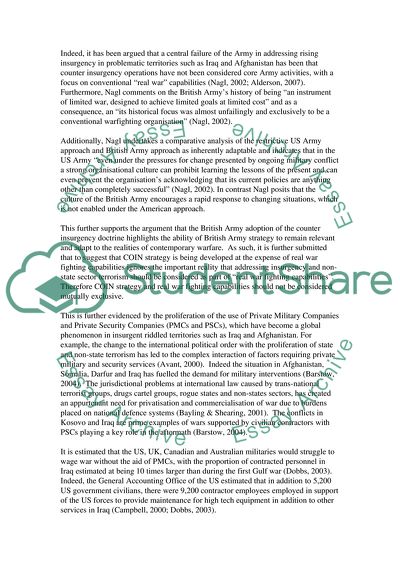Cite this document
(Growing a Generation of COIN Professionals Because of War Assignment, n.d.)
Growing a Generation of COIN Professionals Because of War Assignment. Retrieved from https://studentshare.org/politics/1720900-are-we-growing-a-generation-of-coin-professionals-at-the-exspence-of-our-real-war-fighting-capabilities
Growing a Generation of COIN Professionals Because of War Assignment. Retrieved from https://studentshare.org/politics/1720900-are-we-growing-a-generation-of-coin-professionals-at-the-exspence-of-our-real-war-fighting-capabilities
(Growing a Generation of COIN Professionals Because of War Assignment)
Growing a Generation of COIN Professionals Because of War Assignment. https://studentshare.org/politics/1720900-are-we-growing-a-generation-of-coin-professionals-at-the-exspence-of-our-real-war-fighting-capabilities.
Growing a Generation of COIN Professionals Because of War Assignment. https://studentshare.org/politics/1720900-are-we-growing-a-generation-of-coin-professionals-at-the-exspence-of-our-real-war-fighting-capabilities.
“Growing a Generation of COIN Professionals Because of War Assignment”. https://studentshare.org/politics/1720900-are-we-growing-a-generation-of-coin-professionals-at-the-exspence-of-our-real-war-fighting-capabilities.


